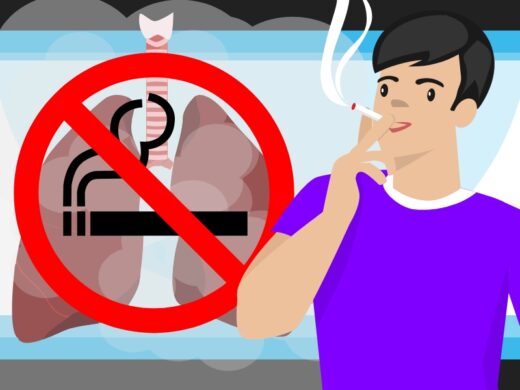
Tobacco has been a popular product for many centuries, but the information we know about the negative health effects caused by smoking cigarettes is more recent. For instance, smokers are likely to die an average of 10 years younger than those who do not smoke. You can enhance your health by opting to quit smoking cigarettes.
What is Nicotine Replacement Therapy?
Nicotine Replacement Therapy (NRT) is a frequently used class of nicotine replacement therapy. NRT can reduce withdrawal by offering a tiny dose of nicotine, but not the other harmful chemicals in cigarettes. A small amount of nicotine can satisfy your desire for nicotine and reduce your desire to smoke.
Medical experts agree that NRT is among smokers’ most effective tools to stop smoking. Certain smokers experience mild to moderate adverse consequences. But, research has shown that NRT is effective and safe. NRT is an essential element of virtually every smoker’s quitting strategy.
NRT is available in various designs that can be utilized in various ways. You can choose which form you like the best. Certain NRT products are more effective than others for certain individuals. Certain people are more prone to particular NRT products than others.
What Medication Is Used For Nicotine Aversion?

Quit-smoking products fall into two major categories:
- Nicotine replacement products. The options include gum, patches, sprays, lozenges and inhalers. While some are available without a prescription, you should consult your physician before trying the products.
- Medications. Two medicines that do not contain nicotine are on prescription.
These products may aid in reducing cravings for nicotine and withdrawal symptoms, which makes it more likely that you will stop smoking completely.
Electronic cigarettes (e-cigarettes) are gaining interest as a way to quitting smoking. However, they aren’t FDA-approved products for quitting smoking. They’re not as secure as nicotine replacement products. Also, they’re not as efficient in helping smokers quit—many users who use electronic cigarettes to quit smoking end up with both products instead of quitting.
The recommended treatment is:
- Nicotinell Patches – these are utilized in the treatment known as Nicotine Replacement Therapy. This treatment method helps smokers quit smoking cigarettes by preventing withdrawal symptoms once they’ve quit smoking completely. Nicotinell patches are made up of the nicotine in cigarettes and other products derived from tobacco. Nicotinell patches are prescribed to smokers. They help smokers quit and stop them from experiencing cravings for cigarettes.
What is Behavioral Therapy?
One billion people around the world are smokers of cigarettes, including 1 in 5 Americans. Smoking cigarettes kills over 5 million persons annually and is the most avoidable cause of death and sickness in the US. According to estimates, one-third of smokers try to quit every year but do so without assistance from a professional.

For smokers who quit by themselves, less than 3% succeed in becoming permanent smokers. A lot of smokers find it difficult to get rid of the habit and are often discouraged and depressed about the likelihood of ever having the ability to quit smoking completely. However, successful treatments can dramatically increase your odds of successfully quitting.
It can be extremely difficult if you don’t have a strategy to control and reduce the urge to smoke. Research has proven that smoking cigarettes are among those habits that are the hardest to stop. In addition, quitting smoking could have negative effects like increased weight, anxiety and fatigue.
Cognitive Behavioral Therapy (CBT) for quitting smoking is a proven treatment that numerous research studies have clinically supported. It is the treatment that is most commonly used to quit smoking. Behavioral therapy aims to develop new, more efficient behaviors to overcome addiction.
Cognitive behavioral therapy to quit smoking is based on altering people’s responses to their desire to smoke. It is achieved through altering behavior and thoughts. Changing thoughts involves examining the negative thoughts that lead to smoking and acquiring more efficient habits. Learning to change behaviors requires understanding the purpose of smoking and replacing smoking habits with alternatives that perform the same purpose. In addition, training in mindfulness and skills for emotional regulation can assist in coping with intense cravings.
CBT techniques for quitting smoking include:
- Mindfulness-based training
- Self-monitoring
- Cognitive restriction
- Functional analysis
- Regulation of emotions
- Training in impulse tolerance








